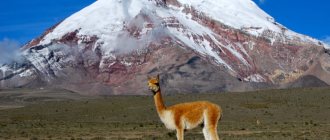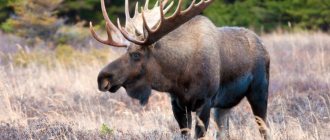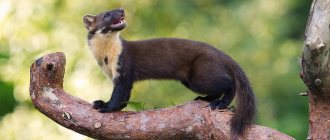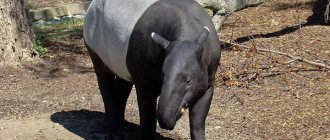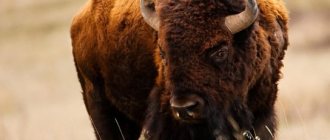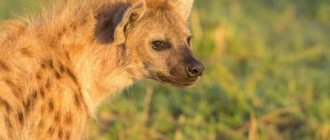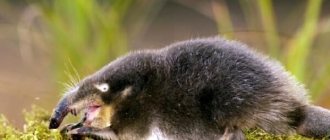Origin of the species and description
Photo: Puma
The name of this predator comes from the dialect of the Peruvian Indians. This people believed in the legend that the puma was a lost child who chose the wrong path in life. Perhaps this saying arose due to the fact that cougars often hunted livestock.
Another name for puma is American lion. This name was given to it by settlers from the New World. Residents were proud of their way of life, the fact that they had to be in harsh conditions of constant danger, where at any moment they could be attacked by this formidable animal.
Interesting fact: The puma is included in the list of world achievements and is included in the Guinness Book of Records as the animal with the most names. Only English-speaking countries have more than 40 names of royal cats.
In the past, it was believed that there were more than 25 species of these animals. But in the modern world, based on genetic examinations, only 6 varieties are distinguished, of which 4 are already extinct:
- Puma pardoides;
- Puma inexpectatus;
- Puma pumoides;
- Puma trumani.
The living subspecies Puma concolor and Puma yagouaroundi live in America. Previously, the jaguarundi subspecies was distinguished as a separate genus Herpailurus Severtzov, 1858. However, studies at the molecular genetic level have discovered a close relationship between these species, as a result of which current taxonomists classify them as the same genus.
Interesting fact: The black puma subspecies has not yet found scientific confirmation of its existence and is most likely a fiction. In most cases, these are cougars with dark brown fur, which from a distance can be mistaken for black.
Another DNA study found that the closest relative of these predatory cats is the cheetah. Its unusual physique gave reason to place it in a separate family Acinonychinae, but its close relationship with pumas still forced the cheetah to be classified as a family of small cats.
Appearance and features
Photo: Animal puma
The puma is a fairly large wild cat, which on the American continent is second in size only to the jaguar. Males always exceed the size of females and look much larger. Northern cougars are usually larger than southern ones.
- Body length - from 110 to 180 cm;
- Tail length - from 60 to 70 cm;
- At the withers - from 60 to 85 cm;
- Weight - from 29 to 105 kg.
The physique of pumas is massive, but flexible. Strong slender paws are equipped with sharp claws, with 4 toes on the front and 5 on the back. Retractable claws are convenient for the animal to hold prey and climb trees. The head is relatively small and slightly elongated. There are black areas on the face and ears. The jaw and teeth are very strong, allowing them to break bones.
Interesting fact: The age of a cougar is determined by its teeth. By 4 months, all milk teeth have erupted, which soon fall out, and by 6-8 months, permanent teeth begin to emerge. At 1.5-2 years all teeth grow. With age they wear off and darken.
The long, powerful tail acts as a balancer when jumping. A wild cat can jump up to 7 meters in length and up to 2 meters in height. When hunting while chasing prey, mountain lions can reach speeds of up to 50 kilometers per hour.
Video: Puma
The thick and extremely short coat does not have a distinct pattern. The fur is red, sandy in color, which resembles the color of a lion. Differences include size, lack of a mane, tassels on the tail and pink nose. There is a whitish tint on the belly. Cougar babies are born spotted, like bobcats, and their fur is thicker and softer.
Cubs open their eyes 2 weeks after birth. Newborn pumas have blue eyes, but after six months they change to brown or amber. The pattern on the coat begins to fade at the age of 9 months, the spots fade and completely disappear at 2 years.
Behavior
Pumas live both on the plains and in the mountains at an altitude of 4700 m above sea level, in a variety of landscapes: mountain coniferous forests, tropical forests, grassy plains, pampas, swampy lowlands.
The main criteria for choosing a place of life for a puma are the availability of shelters and prey. The muscular limbs of the puma help the predator make jumps of up to 6 m in length and up to 2.5 m in height, and reach speeds of up to 50 km/h over short distances. Pumas easily move along mountain slopes, can climb trees and rocks, and swim well. This animal is very quiet, and produces loud screams, reminiscent of a human scream, only during the breeding season.
Lifestyle
The puma is characterized by a solitary lifestyle. The female's hunting territory covers an area of 26-350 km², and is located on the outskirts of the male's territory. The male's range is from 140 to 760 km². Adult males avoid each other and do not enter other people's areas. Cougars roam their territory seasonally. Territory boundaries are marked by scratches on trees and excrement.
Where does the puma live?
Photo: Puma mammal
The puma's habitat ranges from the Rocky Mountains on the North American continent to Patagonia in the south. Due to their adaptability to any living conditions, the habitat of these predators is very diverse - from lowland forests and mountain landscapes to tropical jungles and swamps. These animals are secretive and avoid very open places.
Previously, cougars lived in different parts of America, their range was the widest compared to all other mammals of the continent. But due to mass extermination, the animals had to leave their former habitats. Their habitats coincide with their main prey - deer. The main selection criteria are places for shelter and plenty of food.
The prevalence of places where these animals can be found has led to local residents giving them inaccurate or poetic names. Some subspecies are named after their habitat. Where this predator lives depends on its species. But basically they all prefer places with a minimum of open terrain and with the ability to ambush.
Since big cats are solitary in nature, males choose quite large territories for themselves, which range from 20 to 50 square kilometers. While females are less demanding and occupy areas of 10-20 square kilometers.
Home range
Cougars live in low-density areas (one to five individuals per 100 square kilometers), so they require large areas with ample prey and reliable ambush cover to survive. In most habitat regions, there are about two or three mature females for every male. There is a lot of overlap between the home ranges of females, but very little overlap between the territories of neighboring males. Home ranges vary greatly in size, but females typically have average territories of 140 square kilometers, while males' territories are almost twice that size.
What does a puma eat?
Photo: Puma cat
The puma is a predator by nature. Her appetites often exceed her ability to eat prey. On average, they eat up to 1,300 kg of meat per year. This is approximately 48 ungulates.
She hunts a variety of animals, depending on their habitat:
- deer;
- monkeys;
- bulls;
- beavers;
- raccoons;
- mice;
- sparrows;
- snake;
- mountain sheep;
- wild boars.
Cougars do not distinguish livestock from wild animals, so sheep, cats, and dogs may well become their victims. Since they can only disdain skunks, they also hunt frogs, insects, and snails. Skunks often manage to use their foul-smelling weapons and cougars ignore these animals.
Mountain lions are quite bold animals and usually attack prey that is significantly larger than their size. First, they watch the prey from a hiding place, quietly creep up, and then pounce on the prey from behind and break the cervical vertebrae or strangle it. Its running speed and ability to climb trees allow the puma to catch up with ostriches and catch monkeys in trees.
These animals are very voracious. They will never leave a half-eaten lunch and share it. Pumas always return to the scene of the kill or hide the remains in the snow or bury them in leaves as a reserve. Cougars do not like to chase victims. If the first jump does not kill the prey, the cats will not pursue the prey for long.
Anteaters, armadillos, coyotes, marmots, squirrels, insects, small birds are an easy, not filling snack for American lions. In pursuit of prey, cougars look especially impressive and elegant when jumping. They usually hunt in the dark, but on a hot day they like to lie on the sunny edge.
Diet
The puma's prey list is long - the cat is considered a very effective predator. In most areas, the main item on a mountain lion's menu is ungulate mammals (usually deer), but sometimes the diet expands to include:
- porcupines;
- hares;
- beavers;
- coyotes;
- raccoons;
- lynxes;
- skunks;
- possums;
- young bears.
Cougars also attack domestic animals, including sheep, goats, young calves, dogs and horses. Since the cougar causes great damage to sheep and cattle farms, it has been completely exterminated in some areas.
Photo: Neil McIntosh
Mountain lions are active primarily during dusk, nighttime, and dawn. North American individuals annually kill fifty ungulates and countless small animals. Cougars rarely feed on carcasses they have not killed. When catching prey, this wild cat moves within a radius of approximately 10 km, hunting in several trips, averaging 1.5 hours each. Movement through the territory alternates with shorter periods of pursuit, waiting in ambush, or resting.
The cougar leaps from cover at close range, mostly from behind its chosen victim. When a large mammal is captured, the predator drags the carcass to a hiding place, covering it with leaves and other plant material to protect the food from scavengers. During the day, the cougar usually rests within a radius of 50 meters from the carcass, reliably guarding it. On average, a mountain lion will feed on large prey for three days. With the exception of cases of catching large prey, the cougar rarely chooses the same place for rest for several days in a row.
Features of character and lifestyle
Photo: Wild puma
Since cougars are individualists by nature, each individual occupies quite large domains. Predators mark the boundaries of their territory with urine, feces and notches in trees. The territories of opposite-sex individuals can overlap, but males never enter each other’s territories if they feel that the domain has an owner.
It happens that wild cats have to change their environment due to circumstances. They will try to leave foreign areas as quickly as possible and occupy a free zone. The road can be long. So, pumas from Wyoming were met in Colorado, which is half a thousand kilometers away.
Mountain lions are very patient and silent animals. If the tiger goes on a rampage in the trap trying to free itself, the cougar will calmly get rid of the trap, even if it takes several days. If she fails to break free from the shackles, she will fall into melancholy and lie silently and motionless.
Cougars do not attack people and try to avoid them in every possible way. It’s not for nothing that modesty is considered one of their character traits. The cougar will not show aggression until it becomes so hungry that it is on the verge of exhaustion or tries to protect its offspring.
Interesting fact: North American Indians believed that cougars were creatures of the devil. Their roar made everyone shake with fear. But these cats make the sound of a locomotive whistle only when they are angry; the rest of the time they purr like cats.
Social structure and reproduction
Photo: Cougar cub
The mating season of American lions does not last long - from December to March. Pairs form for about 2 weeks, then break up again. Only those cats that have their own territory are prone to breeding. Males can mate with several females living in nearby areas.
At this time, fights for the chosen ones take place between the males with loud growls. The winner tries to cover as many females as possible from within his area. The heat lasts 9 days. During the mating period, like other cats, pumas make heartbreaking sounds.
Gestation of offspring averages 95 days. One litter can produce from two to six spotted kittens, measuring up to 30 cm in length and weighing up to half a kilogram. After a couple of weeks, the babies open their eyes and ears, and their first teeth begin to grow. With age, the patterns on the body and rings on the tail disappear.
Watching the mother cougars at the zoo, it became clear that the females would not let anyone near their cubs or even allow them to look at them. The first appearance will take place approximately a month after birth. Up to one and a half months, babies are fed with mother's milk, then they switch to solid food.
The mother takes care of the children until they are two years old, after which the teenagers have to find their own domain. They can stay in a group for some time, but then they go their separate ways. Females are ready to reproduce at 2.5 years, males at 3. On average, they live 15-18 years in the wild, and more than 20 years in captivity.
Mountain Lion Choice
The price includes several components:
- Age. An adult animal that has been trained in training is valued at a higher price. A newborn kitten will cost less than a month old.
- Floor. They ask more for a female.
- View. There are 6 subspecies of the animal. For a rarer subspecies, the price is correspondingly higher.
It is worth calculating the cost of intercity delivery, if any. Some customers have a similar service. In Russia, not all subspecies of pumas are bred. Black cougars are considered more expensive, of which there are few even in the wild.
The price starts from 100-130 thousand rubles. per month's individual. The older the cougar, the higher the cost.
You can legally purchase a puma only in a nursery. There are known cases of purchasing a cougar from a petting zoo, but the best solution remains a nursery. Only in this case can you be sure that the puma kitten is healthy and has the necessary veterinary documents. In addition, the buyer will be advised by the breeder regarding maintenance, nutrition and some nuances.
Natural enemies of pumas
Photo: Puma animal
Cougars have practically no natural enemies. However, they are still afraid of black bears, jaguars, grizzly bears, crocodiles, black caimans, packs of wolves and large Mississippi alligators. Baribals and grizzlies can often feast on caught puma prey. Typically, these animals attack weak, old or injured cougars.
One of the enemies is a person who sets traps and traps for pumas, shooting cats for profit. Cougars are very fast animals and, if she can evade a shot from a gun, then a trap will make her suffer for a long time. If she fails to free herself, she will silently wait for the hunter.
US President Theodore Roosevelt created a society for the protection of animals, but at the same time allowed the extermination of pumas with impunity with the support of the head of the zoological community of New York. Hundreds of thousands of mountain lions were then killed across America.
With the advent of Europeans on the American continent, mass extermination of pumas began due to predators attacking livestock as easy money. One of the subspecies has received the name “horse exterminator” in several states. Then the hunt for cougars began with dogs, driving them into trees, where the cats could be easily shot.
Population and species status
Photo: Cougar Predator
Despite the fact that hunting pumas is prohibited in almost all states, the extermination of American lions continues due to attacks on cattle farms. But, although their habitats become unsuitable due to environmental destruction, thanks to their easy adaptation to any living conditions, most species are quite numerous.
On the verge of extinction in the 20th century in the United States, the puma population in the west alone numbers about 30 thousand adult individuals and continues to populate the state to the south and east. Adaptation to any landscape helps cougars increase in numbers.
Due to the encroachment of mountain lions, the Florida cougar population has reached dangerous levels and is currently endangered. Sport hunting, drainage of swamps and cutting down of tropical forests led to the extinction of the species. In 1979, there were approximately 20 individuals. Natural reproduction is no longer possible and wild cats are under protection.
Poverty of genetic material leads to the birth of babies with disabilities and deformities, as a result of which immunity decreases and susceptibility to diseases increases. At the moment, all individuals live in the territories of the Florida reserve and their number is 160 units.
For a long time, scientists believed that the eastern cougar, native to Canada and the United States, was listed as extinct. But in the 1970s, several adult individuals were discovered in the city of New Brunswick, which were immediately taken under protection. Over the course of several years, they managed to reproduce up to 50 individuals.
The tragic story of the Berberov family
This happened in the 70s of the last century, when a lion, the king of beasts, appeared in the apartment of one family living in Baku. The Berberovs did not perform in the circus, and they did not have the skills of professional trainers, but the family loved animals, and very much so. Because of their love for them, they had many animals in their apartment. It was a real zoo in the apartment. One of their pets, already an adult lion, starred in the film “The Incredible Adventures of Italians in Russia.” This was a very kind lion, compared to the other lion, who turned out to be a real predator, sending his owner to a hospital bed and her 14-year-old son to the next world.
Puma - interesting facts
